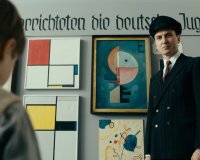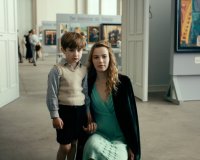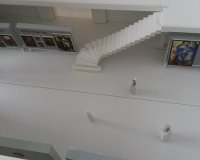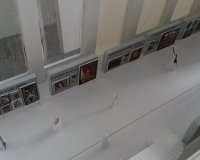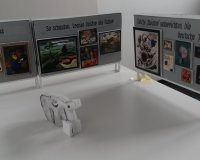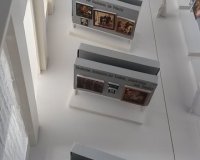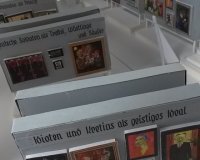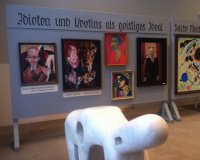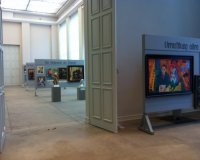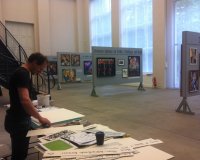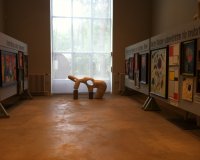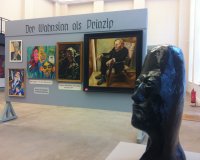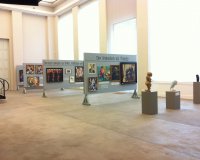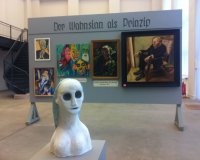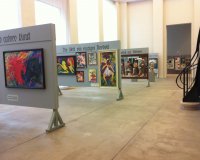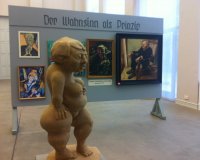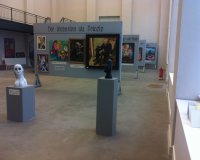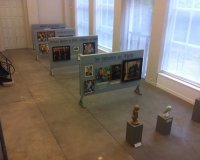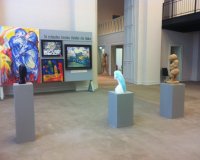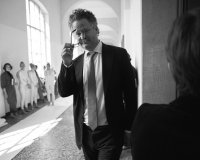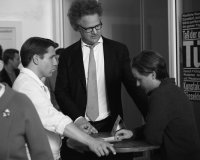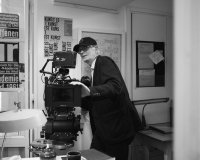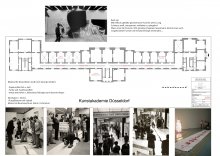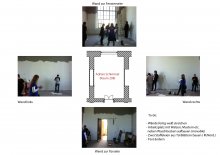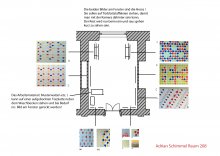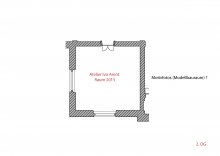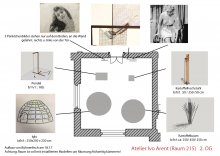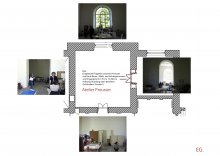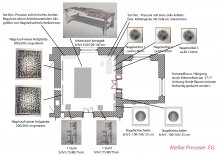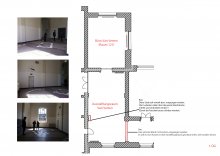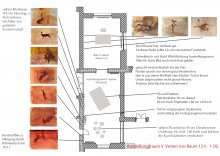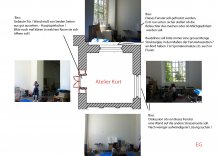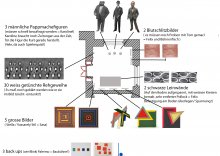Never Look Away - Working Method
The young artist Kurt Barnert manages to escape from the GDR to the West. He still suffers from what he experienced growing up there. When he falls in love with the student Elizabeth, his life changes fundamentally - both for the better and for the worse. She is the love of his life and inspires him to come to terms with his past in his art. But Kurt has to suffer under his obscure father-in-law, who reopens old wounds.
The film is set in Germany between 1935 and 1968.
In addition to the usual historical research, explicit "art-historical" research was required for this period; in particular, it was necessary to find out which art exhibitions had taken place when and where, and whether they were suitable for representation in the film. It was also necessary to consider how this representation should take place.
The wishes of the director F.H.v. Donnersmark and the production designer S. Buhr for exaggerations, for temporally variable arrangements, as well as other artistic adaptations had to be taken into account and implemented. Artists were to be found who could paint in the style of certain artists but who should not actually copy them. Of course, any copyrights had to be observed.
The fact that I was able to take on these tasks, which were not only new to me but probably could only be done for a few films, made me particularly happy. Last but not least, my Dresden Art Academy students were able to benefit from the fact that works of art were created here, and their use and effect in the film could be directly scrutinized.
I would like to briefly describe and illustrate two particular themes of the film here:
1. the exhibition "Degenerate Art" (1935/37), which introduces the film.
In order to present the defamatory nature of the exhibition comprehensively and directly in the short opening sequence of the film, the most striking, expressive images were to be selected and compiled under certain headings. For all artists who had not been dead for more than 70 years and whose copyrights had expired, the rights had to be requested from the estate or the VG-Bild-Kunst and purchased by the production. Last but not least, artists then had to be found who created copies of almost 100 paintings and sculptures. The main part of the artwork and captions was done by F. Manchon, a terrific stage painter who was responsible for much of the art in this film.
Set
2. the Düsseldorf Art Academy around 1961, where the artist created his first formative works.
Here mainly, the then prevailing spirit of the time, a departure into modernity, should jump on the viewer. One sees many later famous artists at the development of your ideas and your mutual influence. In addition to many scenes in the artist's studio and the adjacent studio of a colleague, scenes play in the studio and office of his professor.
When the hitherto quite unknown artist comes for the first time to the academy for the open day, he is drawn as if by a whirlpool into the spell of the various actions and happenings. For this, many artists had to find many adequate but not identical artworks and performances, which were arranged in the playable rooms and corridors of the academy in such a way that a regular choreography resulted.
